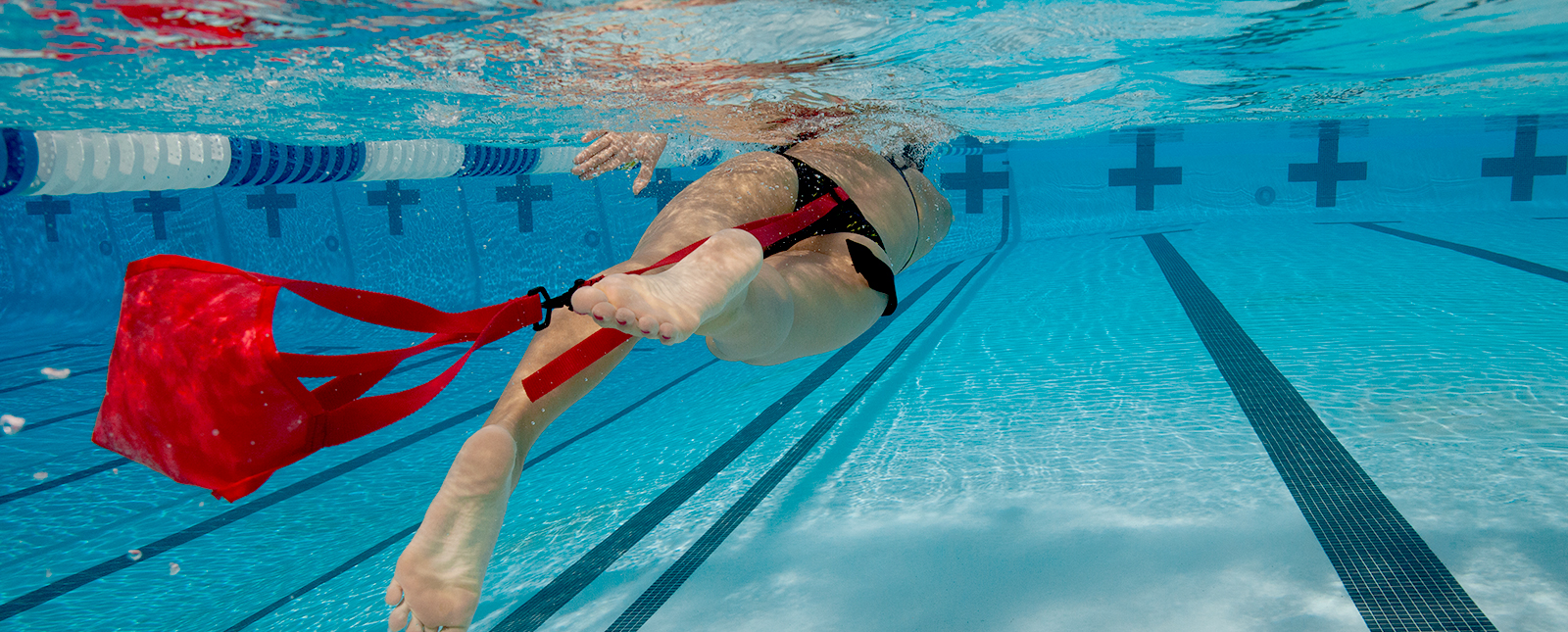Drag
For swimmers, drag can be a blessing and a curse. In training, a
swimmer want's as much excess drag as she can get in order to
become stronger. In a race, however, a swimmer want's to
minimize drag at all costs. Even the smallest amount of drag
created by arm and leg hair is minimized in order to try to
shave off a hundredth of second.
When training, swimmers will sometimes swim with a small
parachute tied around their waist in order to create a large
amount of drag. Not surprisingly, these small parachutes are
typically called drag chutes and look a lot like this.

http://www.finisinc.com/Swim-Parachute
To calculate the drag force that this chute creates is fairly
easy using the following equation
| F=.5PAC(v)^2 |
the force of drag is
equal to half the density of water multiplied by the cross
sectional surface area of the object multiplied by the
drag coefficient multiplied by the velocity squared. |
Using this equation and the fact that the density of water is
1000 kg/m^3,
the drag coefficient is .42, and the radius of the circle is
3in, we can determine that
F = .5(1000 kg/m^3)(0.0103*pi m^2)(0.42)(v)^2
For this problem, we are going to assume that with the drag
chute, the swimmer is moving at 1.5 m/s
Keeping this in mind we can say that the force of drag the
swimmer is overcoming is
F = 4.877 N
Now we must figure out the force of thrust with the drag chute.
| F =
Fd + m * a |
Force of thrust is mass
times acceleration plus the drag force |
F = 4.877 N + 59.65 kg(a)
This
would be the equation for the force of thrust with our drag
chute on.
| x =
(xo) + (vo)t + 0.5at^2 |
The final position of an object is equal to the initial position plus the initial velocity multiplied by time plus half the acceleration multiplied by time squared |
Substituting in that x is equal to 22.88m and t is equal to
15.25s we get
22.88m = 0.5a(15.25s)^2
a = 0.197 m/s^2
Plugging that into our force of thrust equation we get that
F = 16.63 N
Now if we remove the extra drag force and tell the swimmer to
swim as if that force was still there, how fast would the
swimmer go now?
Well by putting our force of thrust while overcoming the chute
in our force equation we get
16.63 N = 59.65kg(a)
a = 0.279 m/s^2
Putting that acceleration back into our position equation we get
22.88 m = 0.5(0.279 m/s^2)t^2
t = 12.81s
In order to get from one end of the pool to the other in that
amount of time a swimmer would have to be going at an average
velocity of 1.79 m/s
An almost .3
m/s
difference between the two velocities is huge and could be the
difference between first and last in a race.